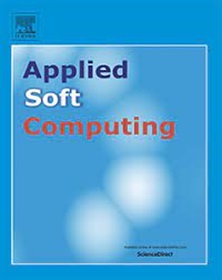关节阶段特征调制渐进式盲脸恢复
IF 6.6
1区 计算机科学
Q1 COMPUTER SCIENCE, ARTIFICIAL INTELLIGENCE
引用次数: 0
摘要
盲脸恢复(BFR)面临的一个重大挑战是如何处理人脸图像中未知参数的退化信息。BFR方法已从非先验方法发展到基于先验方法,但仍存在一些不足。先验的质量严重影响恢复效果,特别是在退化严重的情况下。同时将退化的图像直接编码或调制到恢复过程中,会引入退化的信息,导致视觉感知差。因此,我们提出了一种具有联合阶段特征调制的渐进恢复模型,命名为JSFM-GAN。JSFM-GAN可以看作有两个阶段。在第一阶段,LQ图像与面部分辨率图进行调制,以提供用于恢复的粗略结构。第二阶段是联合舞台特征调制(Joint stage Feature Modulation, JSFM),利用LQ图像和舞台特征在多尺度上进行联合调制,结合舞台特征的清晰空间信息和LQ图像的色调结构,平衡逼真度和真实感。同时,利用上采样特征补充块(UFSB)来减少信道衰落带来的信息损失,提高网络对人脸成分和纹理的关注。此外,我们使用阶段重建损失和调整面部解析图来增强生成结果的真实感和对称性。JSFM-GAN在合成数据集和实际数据集上的实验都取得了良好的效果,证明了我们的方法具有优越的性能。本文章由计算机程序翻译,如有差异,请以英文原文为准。
Joint stage features modulation for progressive blind face restoration
A significant challenge for Blind Face Restoration (BFR) is to cope with the degraded information of unknown parameters in face images. The BFR method has evolved from non-prior to prior-based methods, but there are still some shortcomings. The quality of priors seriously affects the restoration results, especially in scenarios with severe degradation. Simultaneously encoding or modulating degraded images directly into the restoration process can introduce degraded information, leading to poor visual perception. Therefore, we propose a progressive restoration model with the joint stage features modulation, named JSFM-GAN. JSFM-GAN can be seen as having two stages. In the first stage, the LQ image is modulated with the facial resolution map to provide a rough structure for recovery. In the second stage, Joint Stage Feature Modulation (JSFM) utilizes the LQ images and stage features for joint modulation on multiple scales to balance fidelity and realism by combining clean spatial information of stage features and the tonal structure of LQ images. At the same time, the Up-Sampling Feature Supplement Block (UFSB) is used to reduce information loss due to channel fading and improve the network’s focus on face components and textures. In addition, we use the stage reconstruction loss and adjusted facial parsing maps to enhance the realism and symmetry of the generated results. Experiments with JSFM-GAN on synthetic and real-world datasets achieve good results, demonstrating the superior performance of our method.
求助全文
通过发布文献求助,成功后即可免费获取论文全文。
去求助
来源期刊

Applied Soft Computing
工程技术-计算机:跨学科应用
CiteScore
15.80
自引率
6.90%
发文量
874
审稿时长
10.9 months
期刊介绍:
Applied Soft Computing is an international journal promoting an integrated view of soft computing to solve real life problems.The focus is to publish the highest quality research in application and convergence of the areas of Fuzzy Logic, Neural Networks, Evolutionary Computing, Rough Sets and other similar techniques to address real world complexities.
Applied Soft Computing is a rolling publication: articles are published as soon as the editor-in-chief has accepted them. Therefore, the web site will continuously be updated with new articles and the publication time will be short.
 求助内容:
求助内容: 应助结果提醒方式:
应助结果提醒方式:


